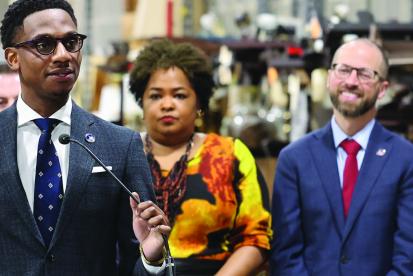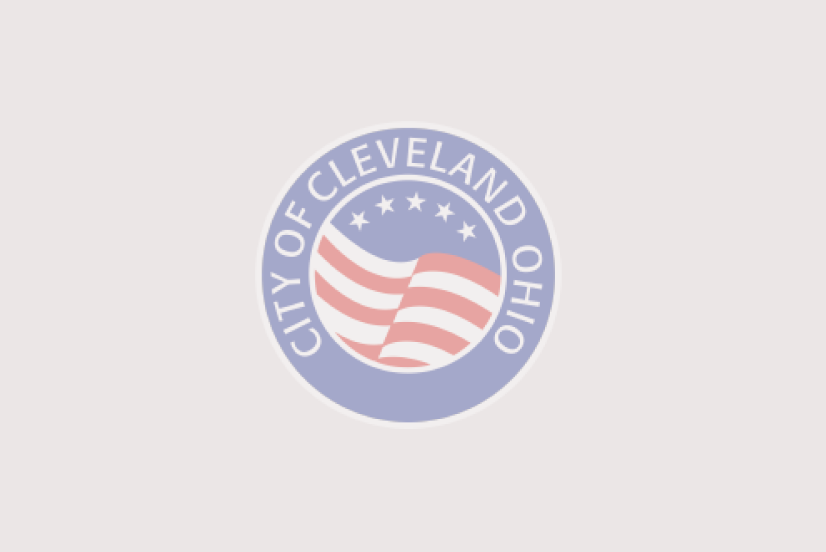The Initiative Targeted Four Sites Across The City In Its First Two Stages
Monday, October 7, 2024 — Cleveland — Mayor Justin M. Bibb announced the results for the second stage of the City’s “A Home for Every Neighbor” initiative. During the second stage of implementation, 35 highly vulnerable unsheltered neighbors who were experiencing long-term homelessness and dealing with untreated disabilities were engaged, housed, and are now receiving ongoing support. The initiative’s strategy identified two target areas for the second stage of implementation on Payne Avenue, between East 18th Street and East 19th Street, and near West 144th Street and Lorain Avenue by the West Park rapid station. The team behind the initiative successfully engaged and found housing for 12 unsheltered individuals residing at the Payne location and 23 unsheltered individuals residing at the West Park site.
“We know – based on the data we have – that 15 neighbors we found homes for were experiencing homelessness for over a year, and another 15 neighbors were experiencing homelessness for more than two years. That’s approximately 63% in total who experienced chronic homelessness,” said Mayor Bibb. “The data reaffirms that these individuals’ specific needs were not being met by the current systems in place, which is the reason why my Administration stepped up to take on a more active role in addressing this issue. I’m proud of the work our team has done so far and will continue to do, and am grateful for city council’s support in helping our most vulnerable neighbors.”
The 35 unsheltered neighbors who now have homes builds on the success the initiative saw in its first pilot month, where homes were found for 12 unsheltered neighbors residing at sites in Canal Basin Park and near West Side Catholic Center.
“Our ‘Home for Every Neighbor’ initiative marks a significant step forward in our commitment to addressing unsheltered homelessness in Cleveland,” said Ward 7 Cleveland City Councilwoman Stephanie D. Howse-Jones. “By combining compassion with effective partnerships, we are not only providing immediate housing solutions but also fostering supportive communities for our most vulnerable neighbors. Together, we will continue to build a future where every resident has a place to call home."
Earlier this year, Mayor Bibb launched this brand-new initiative with the City taking on a co-lead role to provide more resources, increase options, and accelerate the housing process for unsheltered residents. Within just the first couple of months, a Request for Proposals was issued, multiple responses were vetted, and a consultant was chosen – who then refined the City’s strategy based on best practices from model cities and tailored it to Cleveland-specific strengths and community partnerships.
The finalized execution strategy included identifying geographic areas for targeted housing-focused outreach; documenting unique needs specific to each neighbor in these areas; recruiting landlords with signing bonuses and twelve months of guaranteed rental payments; aligning and collaborating with various partners for health, employment, transportation, and other services; intensive and compassionate engagement with neighbors during the transition process; and ongoing case management along with additional support following move-in.
The teams implementing the strategy are currently working on other site locations across the City and continue to look for ways to improve procedures and streamline processes so that unsheltered neighbors can get access to housing more quickly.
The success of the “A Home for Every Neighbor” initiative builds on the Bibb Administration’s commitment to supporting the city’s unsheltered community. In January, the Bibb Administration stepped up to fill a funding gap that supported emergency seasonal shelters and related services for unsheltered residents. That same month, the Bibb Administration announced more than $3 million in funding to seven local agencies for rapid re-housing efforts and various programs designed to support all residents – youth, families, and older adults – in shelters. The City has also opened several of its recreation centers as both warming centers this past winter and cooling centers this past summer during extreme cold and heat conditions, with thousands of visitors utilizing these sites so far this year.



